Teachers biographies and class descriptions of the contactfestival 2013!
Levels:
The classes are not divided into levels. The classes are open to any experience in dance and movement. Please read the descriptions and respect your own limits.
In the registration process you will choose your intensive. Just make your decision depending on the themes of the intensives. The classes you can choose spontaniously at the Festival.
On the first day we will focus on Contact Improvisation principles.
| Intensives |
Classes |
|
|
|
Musicians |
| |
Thursday |
Friday |
Sunday |
Monday |
|
| Nita Little |
Paul Singh +
Tim O'Donnell |
Paul Singh +
Tim O'Donnell |
Katarina Eriksson |
Günter Klingler |
Jules Beckman |
| Thomas Kampe |
Georgia Petrali |
Joe Stoller |
Sue Stuart |
Marika Rizzi |
Xavier Fassion |
| Bo Madvig |
Muriel Mollet |
Bronja Novak Lindblad |
|
|
|
| Ulla Mäkinen |
Sebas van Wetten |
Emmanuel Grivet |
|
|
|
| Jules Beckman |
Hugo Leonardo |
Zita Pavlistova |
|
|
|
| |
Iiris Raipala |
|
|
|
|
|
| |
|
last update 26th of July 13 |
|
| INTENSIVES |
| Nita Little |
USA |
|
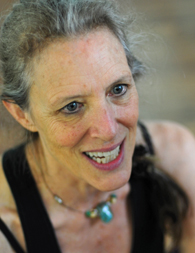 |
Beginning from the earliest days of Contact Improvisation, Nita Little continues as a dance researcher and choreographer who has been invested in discovering new ways to know dance and to extend the creative parameters of embodied experience in motion. Her work takes her touring and teaching worldwide. She participated in the emergence and development of CI with Steve Paxton and others in 1972, which is when her inquiry into the embodied mind in the physics of motion, creative action and the performance of presence began. She is completing her PhD in Performance Studies at the University of California at Davis as a preparation to publish work about these investigations. Concerned with dance as a means to greater ecological engagement she is developing a movement methodology that trains the mindbody through the physicality of attentional practices while writing her dissertation. Her academic work on the mindbody is becoming available through her blog: peripheral-intelligence.com. She is currently working on a dance film that visually articulates this material. |
|
| Crowdsourcing: Contact Improvisation, 40 years of Emergence |
|
| Contact Improvisation resists codification and thus is an emergent practice; worldwide teachers individually and collectively invent the form. Inventions and the means by which they emerge are integral to the depth of its progress as both a technical dance form and an international social practice. This workshop views Contact Improvisation’s growth in part as a result of crowdsourcing made possible by reconsidering pedagogic expertise. It will look at the growth in dancer’s abilities that sustain greater complexity and detail in three areas: communicative means, time and spatial practices and the embodiment of flexible attentional (i.e. states) capacities. Looking at 40 years in the development of Contact Improvisation, this workshop moves its participants through a decade-by-decade progression, that considers Contact’s physical inquiry into what constitutes the bodymind and the parameters of dance. The emphasis of our practice will define and train CI’s most progressive frontiers. This workshop is designed for CI dancers, who wish to understand their place in a moving system, while setting the ground for a future they will be a part of. |
| Thomas Kampe |
GER/UK |
|
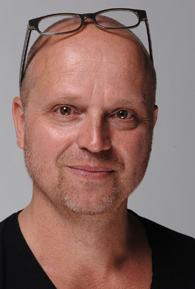 |
has worked with dance, theatre, and movement for the last 30 years. He worked as performer, choreographer and director in Germany and Britain and works as Senior Lecturer for Movement for Actors at Bath Spa University. He has taught somatic approaches towards movement education, dance theatre and Contact Improvisation in different settings around the world. Works have included solo performances featured in galleries and venues including Moltkerei Cologne, The ICA London and The Purcell Room London, international collaborations with dance and theatre companies, installation work with artist Laura Belem in Sao Paulo, Brazil, and a site-specific choreography with a cast of 150 performers (plus one dog!) in St. Pauli Stadium in Hamburg, Germany. He choreographed and designed an acclaimed recreation of 'Dybbuk' for Pascal Theatre Company, which was presented at 'Dream -Up' theatre festival in New York City in August 2010. In 2012 he collaborated with 'Blackhole Factory/TIG', Braunschweig, Germany in co-directing 'The Mill', a trans-disciplinary performance research project and directed 'The Secret Listeners', a site-specific guided tour event with a large scale cast in London. Thomas trained as a visual artist in Germany and subsequently trained in dance at the Laban Centre in London. He has worked as a choreographer, director, designer, and as performer with Liz Aggiss, Hilde Holger, Rosemary Lee,The Wedding Collective, JocJonJosh, and Julia Pascal. He is a qualified teacher of the Feldenkrais Method ®, which forms a foundation for his teaching of dance and movement. |
|
'The Art of Making Choices - The Feldenkrais Method and Contact Improvisation'
|
|
| In this intensive we will investigate potentials for transfer of the Feldenkrais Method, a key somatic movement practice, into CI practice through gentle reflective movement explorations and expansive dynamic embodied dialogues. The Feldenkrais Method offers a relational perspective on movement, perception, and somatic authority and can support our ability to learn and discover new skills with ease. We will explore the use of restrictions, constraints and structured problems as tools for finding freedom, new patterns and greater possibilities in our improvised movement choices. How do Feldenkrais-based 'Awareness Through Movement' lessons (ATM), as highly structured micro-choreographies, support our curiosity, organic movement capacity, and ability to make unfamiliar choices? How do hands on interventions based on 'Functional Integration'(FI) practices enhance our sense of agency, presence, and empathy within our shared dance practice? |
| Bo Madvig |
DK |
|
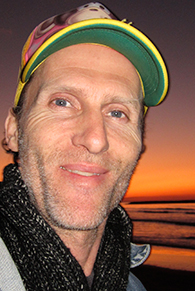 |
From Cirque d´Hiver in Paris to a field on the Danish islands, from the jungle in South America to Volksbühne in Berlin, BM has performed across the most of the world. From his debut as actor in 1977 it became a more or les autodidact journey trough the abstract, the absurd and the realistic theatre. A journey including physical theatre, art installation, group theatre, the Japanese Butoh and Noh, Stanislavsky, political theatre and German Tanz Theater. It became lots of directing, choreographing and teaching. During the mid 1980s BM studied at SNDO, Hoogeschool vor de Kunsten in Amsterdam. His year was the first in the world to have Contact Improvisation on the agenda. Which led him and his generation to the groundbreaking Euro Crash stile. In the early 1990s BM lived and studied in New York. From there he moved to Venezuela to live and work for 2 years. As a freelance artist BM has worked and performed with a big range of the worlds foremost directors and choreographers such as Sasha Waltz, Mark Tompkins, David Zambrano, Yoshiko Chuma, Kirstie Simson, Deborah Hay and Julyen Hamilton amongst others. |
|
| Riding on Air |
|
| If CI was a verbal dialog, it would often be described as two people speaking, mumbling and shouting in the mouth of each other. Contact Improvisation often ends up becoming "go with the flow and survive the moment". Is there a technique for CI? Is it allowed to have a technique? What is then that technique? For me personally, yes! It is about technique: The technique of being present and able to communicate in the moment, the understanding of time, the being in the present while letting go the past and the reading of the near future. The technique is also about understanding the difference between sensing and feeling, choice making as well as the letting go of ideas. Over the years I have for my self developed lots of little working tools for CI. The most important at the moment is the idea of arrival, the use of the negative space, plus the making and composing of the moment. How do we listen, give space, reflect and take the initiative in CI while it is happening? Small talk is also talking. What is it to be present in the flow of choice making? In my classes I will work on expanding and exploring the physical language of the individual, as well as getting it into dialog in partner improvisation, as duet and trio. I will work on the understanding of the kinesthetic response from skin, muscles and stabilizing muscles to bones and joints. When we move, the body basically does three things. It roles, it slides and it nabs. CI is a chaotic combination of it all. Or is it? My stile of CI is light and airy. Like riding on air. |
| Ulla Mäkinen |
FIN |
|
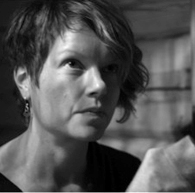 |
Ulla Mäkinen is a dancer and teacher based in Finland. Currently she is the director of the Movement & Performance Research Outokumpu, a three-year international dance education in Eastern Finland. She has been teaching movement and improvisation in educations, schools, festivals and communities in Europe, USA and Asia since nine years. She holds an MA in Contemporary Dance Pedagogy from the University of Music and Performing Arts, Frankfurt a.M, Germany. She has studied several somatic practices as well as Iyengar Yoga. Ulla is also the co-director of Barcelona International Dance Exchange BIDE, a platform for laboratory exchange for dancers and choreographers. In her teaching she includes ideas from laboratory-like ways of research and collaboration. In her work she emphasizes gentle discipline, curiosity and open-minded presence. Rather than seeking for one truth she finds it vital to open the mind and body for alternative options. Rather than fighting against patterns she works to accept and deepen them, to open for the details and endless possibilities of variations in the moving bodies. In addition to her love for dance she embraces somatic and yogic practices, which often include the joys and challenges of shoveling snow, carrying wood and traveling in long-distance trains. |
|
MINOR REVOLUTIONS - Experiential Anatomy into Movement
|
|
Your brain cells put one after another in a row
Would reach from here to the Moon
They are all waiting there, behind your eyes
If you feel yourself small, imagine that
Indissoluble tangle of highway
Four hundred thousand kilometers with the speed of thought
Scenery straight from your imagination
Touch is the first sense that is awakened in us – it begins to develop even before we are born into this world. It is essential for us in understanding and learning about ourselves as well as about what surrounds us, and to feel supported as human beings. Using the power of touch – of listening through our bodies, we let touch guide us into movement and release, unfolding into improvising in solos and in contact. Through witnessing each other, we create kinesthetic empathy, learning about movement and life within and around ourselves. During the classes we play with pathways as well as imagery to create and alternate patterns in the dancing. Starting from experiential anatomy, we bring ourselves into movement. To be curious of the small details can cause minor revolutions, expansion of the inner space to reach into the endless dimensions around us. With touch we deepen our understanding of that what is – and with dance, we live and express it. |
|
| Jules Beckman |
USA/F |
|
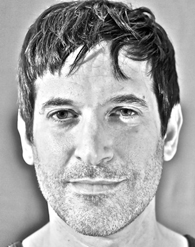 |
is an American interdisciplinary artist and teacher living in France since 2002. He has been making work, teaching and touring in dance, performance and Cirque Milieux since 1987. Collaborations include: Contraband/Sara Shelton Mann; Anna Halprin; Keith Hennessy; Collectif AOC; Mark Tompkins; Cahin-caha; Lhasa; Core; libertivore; Jess Curtis; Stephanie Maher; Zaccho/J. Haigood. Jules has co-created 19 full-evening choreographies and several shorter works. He has taught internationally including at CNAC (France), DOCH (Sweden), Ponderosa (Germany), and various universities in the USA. 2013 teaching: Canaldanse, Moab Jam, KontaktBudapest, Ponderosa Dance and Contact Festival Freiburg. « I began learning CI in San Francisco in 1988, as a member of Contraband/Sara Shelton-Mann, with J. Curtis, K. Hennessy and others. We mixed CI with other forms, experimenting wildly. We used CI to respond to spiritual and political concerns. CI remains a context for various kinds of liberation and community building, a laboratory of hybrid play, a physical prayer, a contemporary expression of the ecstatic dance lineage, a radical practice of decentralized power, an apt metaphor for myriad scales of relationship, a hothouse of connection and empowerment…» |
|
Primal Musicality (Silences that Speak)
|
|
In this intensive we will experiment with connecting primal animal intuition to contemporary human life. It will be both rejuvenating and activating. We will explore how music supports articulate wildness, bridges organicity and identity. We will embark upon an eyes-closed visualization, with live music, led to encourage suspending willful action in favor of witnessing the phenomena of sensation, pleasure, curiosity and movement. This is time/space slowed to our aquatic origins. A collective human magma often ensues. As bones are discovered, verticality tends to increase. With eyes open we’ll play with clock-time, finite space, and choice as a conscious process. Using games, rhythms, and voice work to activate the social body. One-minute improvisations. Explore strategies and foundations of improvisation. This is post-CI intensive, informed by but not limited to the codes of CI. Our goal is to re/discover ourselves with unfamiliar kinds of perceiving, moving and touching.
Quotes that inspire this work:
”Everything comes alive when contradictions accumulate.” - G. Bachelard
”Silence is not the absence of something but the presence of everything.” - G. Hempton |
|
| |
|
|
| CLASSES |
|
| THURSDAY |
| Paul Singh |
USA |
double class 14:00-16:00 + next day - same time!! |
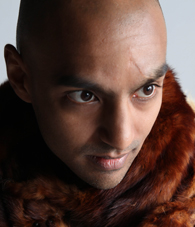 |
is a dancing fool that lives and works in New York City, USA. He earned his BFA degree in Dance from the University of Illinois, USA, where he focused on a variety of dance techniques including Alexander Technique, Ballet, Modern and Contact Improvisation. He began his studies in CI with Chris Aiken and since then has studied with Angela Dony, Yaniv Mintzer, Ray Chung and others. While recently visiting CI festivals in Israel, Russia, Spain and Germany, Paul spent time participating in intensives as well as assisting or teaching fundamentals in falling, flying, failing and laughing. As a student and teacher, he uses his understanding of Bartenieff Fundamentals as well as his innate sense of spatial awareness to explore more deeply the ideas of being grounded, becoming softer, and forgetting the difference between up and down. |
| Together with: |
| Tim O'Donnell |
USA |
double class 14:00-16:00 + next day - same time!! |
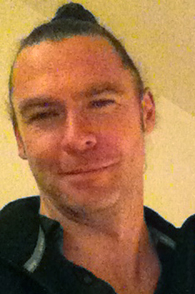 |
is a New York based dance artist who has been studying, teaching, and performing in both the United States and Europe for the past 12 years. His exploration in dance and movement is strongly rooted in a deep physical listening and a sense of adventure. His classes range from the gentle and subtle to the acrobatic and fluidly athletic. He holds an MFA in Dance from Arizona State University and has maintained a private practice in therapeutic bodywork and somatic movement since 1991. Currently he is on faculty at Movement Research and is teaching and performing in NYC where he resides. |
|
| Dancing to be found |
Principles |
| We’re excited to share the past 2 years of research that has helped us become more ready, available and creative. The class will focus on cultivating our responsiveness instead of re-activeness, recognizing and altering our known pathways, and intentionally composing together to create new layers that deepen our dancing. We will pass through the basic principles of grounding our legs, awakening our backspace and softening our joints. However, we will focus on how we use these tools to hear and understand each other better. We aim to cultivate a dynamic listening throughout the entire body that will allow us to risk the unknown more fully. We are spreading the material over two sessions and you're welcome to come to either or both. We wanted to offer the richness that comes from working, resting and retuning fresh to the work. |
| Georgia Petrali |
Greece |
|
 |
performer, choreographer, director, teacher of movement and dance, founder of CI Crete Festival (www.contactimprocrete.com) and of Fysalida Dance Company (www.fysalidance.com), associate of the Dance Centre at the PanCretan Stadium. She has studied dance in England and Holland and has taught movement, improvisation, ballet, contemporary in England, Switzerland, Portugal, Greece. In 1999 she 'discovered' CI and ever since has declared herself 'in love' with it. Improvising, fulfilling socio-political activist actions through movement and art, taking an architectural look at the various places where an artwork is presented, collaborating with professionals and amateurs through community dance, are characteristic technical features and well-trooden 'emotional paths' of Georgia's artwork. |
|
| Suspended while Floating |
Principles |
| By using breathing exercises, body positions used on a day-to-day basis and simple contemporary dance and improvisation techniques, we will attempt to make the body conscious of what is needed to move with clarity, flow and awareness of its own movement. Our goal is to discover the different qualities of each and every movement and to explore the flow of the movement within the body and space in which we exist. What is of concern is to discover space within and outside our body. The principle of movement and of maintaining and developing that movement via physical contact, the unpredictability of each and every moment and the physical forces lead bodies to co-exist as a unique entity, a web of movements which are constantly evolving and reforming, changing shape within space and time, within our bodies and souls. |
|
|
| Muriel Mollet |
CH |
|
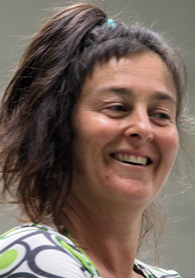 |
is working as a dance teacher, dancer, instructor of Kampfesspiele® and water therapist. After her education at the Professional School for Dance and Gymnastic in Baden, Switzerland (SBTG- 1989) she studied „Elementarer Tanz“ at the University of Sports Köln. She continued studying different Dance- and Improvisation Techniques and Martial Arts (Capoeira, Shinson Hapkido). She was founder and director of SURIEL dance theater (‘93-‘97). Since 2003 she is a member of the Research-, Improvisation- & Performance- Group „x-group“. Performances with the Capoeira Show group and dancing in different dance productions guided her as a dancer through Switzerland, Austria, Germany and Brasil. |
|
Counterbalance - out of balance
|
Principles |
| We will focus on different ways of falling out of balance or keeping the balance together. Through several up building exercises of improvisation and technic with your partner or on your own we will find balance and also enjoy the state of being out of balance. We experiment and offer different possibilities of supporting the small falling of our partner. Dancing together, improvising and having fun together are also a goal of this afternoon. |
| Sebas van Wetten |
NL |
|
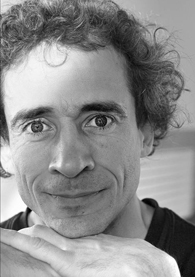 |
dancing and teaching CI for many years; worked as an architect; graduated teacher for "Dansexpressie" (Creative Dance). Studying Physiotherapy since 2010, to let this fertilize the dance and vice versa. Inspirations for his dance and teaching are images of nature and the musicality of movements; sensing our own anatomy to expand and fine-tune our movements. From CI he loves the many ways to play with each other and the subtle communication in touch that leads to unexpected movements. He co-developed "Voelend Dansen": in a playful and safe setting we train to keep feeling our body-sensations to deal with emotions in exciting situations. |
|
| Supported Flight, flying on |
Principles |
| In CI, one of the thrills is to get the feeling of flying: balancing on a moving partner, enjoying the ride. In this class we'll work with different ways to help our partner to fly a little bit. On different levels and in different ways. How to re-direct the flight, to land together safely and to keep in contact to continue the dance. We'll learn to synchronize the take off, reading the movements. Enjoy the not-knowing where it goes. Trust that we land in some way safely if we stay alert and soft. In small steps we prepare ourselves to fly safely. Even these simple flights will give us a lot of fun together. Ready to take off?! |
| Hugo Leonardo |
BR |
|
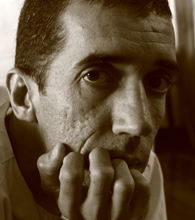 |
Founder and organizer of the EmComTato Contact Improvisation Festival of Salvador-Bahia, where he has been teaching for the last 9 years, besides of participating and collaborating in the Brazilian network of events related to CI. PhD in Performing Arts and Master in Dance at the Federal University of Bahia (UFBA), author of the book “Poetics of Opportunity: choreographic structures open to improvisation”. Researcher and artist at the Technological Poetics Research Group Body Audiovisual directed by Ivani Santana in the Sciences Arts Humanities Institute IHAC-UFBA. Choreograph-dancer of Grupo X Improvisation in Dance, artistic direction of Fafá Daltro. www.hugo-leonardo.com |
|
| Shared dis-habituation |
Principles |
| To be fully present is to open possibilities of breaking through habits, even the “good ones” like those evolution endowed us, as is the case of the body’s abilities of reflexive actions, that we learn to trust, liberate and tame in CI; and like those that the training and practice of CI offers to our body, movement and perception. The paradox would be: we train to have habits to better dis-habituate; we aim to take ride in a flux of movement and communication as soft and reliable, as alert and able, to surprise ourselves. In this class, the proposition is to dance mindfully in order to safely and adventurously destabilize the habits we dance, perceive and experience of ourselves in time, with. |
| Iiris Raipala |
FIN |
|
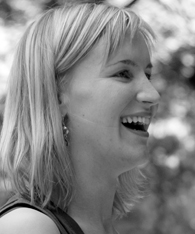 |
I am dance artist; performer and teacher living in Helsinki, Finland. I graduated in 2004 as Master of Arts in dance from the Theatre Academy of Finland. I also studied dance in School for New Dance Development (S.N.D.O.) in Amsterdam and in many workshops around the world. I've been working closely with improvisation and contact improvisation in several performing groups. I am one of the organizers of Goa contact festival and Skiing on Skin -festival in Finland. Besides dance I also practice and teach Iyengar yoga and meditation. The combination of exact alignment of yoga and free flowing movement of contact improvisation brings balance for my practice as well teaching. |
|
| Fall in Trust |
Principles |
| The class will be an exploration of trust. What supports us to surrender to a state of dance? The class will provide physical tools to enter that state of surrendering. We'll also approach the emotional intimacy created in trusting your partner. In order to feel safe and orientated we work on the alignment of your spine and head and practice anchoring and reaching in space. Once that stability is gained we move more into falling from our centerline through releasing the weight of the head. The openness and floating quality in the joints will allow us to fall not only downwards but also upwards and into all directions. We gradually explore off balances and falling into the backspace of the body and simply let ourselves surrender to the dance yet staying available to our partner. |
|
|
|
|
| FRIDAY |
| Double class with Tim O'Donnel & Paul Singh |
see Thursday |
|
| |
|
| Joe Stoller |
USA |
|
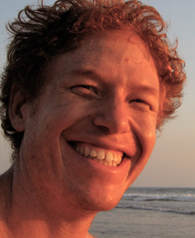 |
has been passionately exploring movement, touch and improvisation since 1998. His engagement with CI has taken him far and wide, including a year long Fellowship in 13 countries to study differences between CI in relationship to cultural context. He helped start a CI community in Grenoble and has danced extensively with Tumble bones in Boulder. Besides teaching CI, he is a Shengzhen Qigong instructor, and professional body worker integrating shiatsu, massage and somatic education. His passion is facilitating the exchange and development of somatic wisdom and nourishing the deepest roots of happiness. |
|
Restorative Contact
|
bodywork into movement |
| Drawing on methods from Bodywork, and Somatic Education we use CI for the maintenance and development of health and somatic wisdom. Bodywork teaches that by giving and receiving touch, health can be cultivated; and somatic education shows us that through presenting and researching somatic wisdom can be transmitted. We will test out differentiating our roles in a dance to learn about the usefulness of polarities such as giver and receiver, the one who is moved and the one moving, the teacher and the student. By growing awareness and understanding of roles, we have more choices available to make our dances deeply nourishing and educational. |
| Bronja Novak Lindblad |
SE |
|
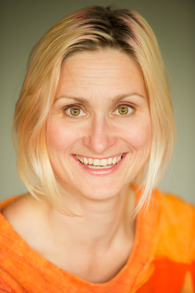 |
Born (-68) and raised in Sweden by Slovak parents. Trained at LCDS 88-91 and PTI in Vancouver 91-92. At LCDS she encountered CI and she not only fell in love with it, but it became the base in her training and work. Since 1993 she’s been working as a dancer/performer and choreographer. Mostly in Sweden, but now and then abroad. By chance she started 1995 to create and perform for children’s audiences, and has continued to do so. She also creates work for adult audiences, often in collaborations with others like Susanne Martin and Katarina Eriksson. She works now mainly with www.bigwind.se (her own work) and www.embladans.se (in collaboration with Anna Wennerbeck). |
|
Back to basics
|
|
| For the experienced as well as the beginner. We will do great bodywork, the little dance, rolling across the floor, point of touch, rolling point of touch, some of the fantastic puzzles, letting go of our egos, surrendering to the form, honouring the people that has provided this for us. We will through the simplicity of the basic beginners exercises go back to remembering what it is that we carry with us from the form. Round Robin. The essence that we keep with us what ever we do with our bodies. Remembering the possibility the form gives our bodies, to keep dancing even though we are changing. I will share the performance skill that the form provides me with. The joy |
| Emmanuel Grivet |
F |
|
 |
Choreographer, dancer and teacher, born and grown up with physical movement and risk (team games, skiing, mountaineering and climbing), first school of life for him, he has developed bodywork and dance. He has created since 1993 about twenty pieces for his group or other companies, many improvised performances and danced and taught regularly improvisation and CI in France and abroad. Involved in an intensive research on the body and the movement, he carries on a dance and performance work, which questions the “physicality” in movement, the relation between human beings and the conditions of the performances. |
|
Being with the instant/within time
|
|
| In CI the body is asked to act and to choose at once, according to different elements such as masses in motion, speeds of movement, shifting situations in dance. The class will be about to take care simultaneously of the moment necessities and the time possibilities; through two questions: «how long?», and «when?». Aiming to connect instant, present and time, we will play with memory, projects and projection, delaying, postponing, anticipation and foreseeing. Special attention will be given to breathing, listening and dealing with impulses and inner timing, in order to dissociate Action (choices) from Re-action (patterns), through experiences of not-doing attitude in motion, non-intentional choices and authentic movement. |
| Zita Pavlistova |
CZ |
|
 |
In her work, she connected the special technique of body movement with contact improvisation. She shares the art of the movement based on listening to our body. In her work, she seeks for limits and loves extremes. She inquires into the body in movement and its connection with mind. She uses long, still and conscious watching to the inner movement, as well as pace, lose of control and risk – situations where body needs to be given an implicit trust. „Our body is wiser than all the teachers. It speaks to us. If you listen, you can understand a lot. Trust it boundlessly and don’t force it anywhere. It is willing to learn and possible to manage thing you have never even dreamed about.“ |
|
Timing and Melody
|
|
| Sharing the same time, we exist as one being. It is impossible to stop anything. It keeps us decisive and ready. Our nervous system gets more gentle, inner tension disappears. Awareness of the time nurtures our energy and brings us to a strange enthused state. This work deepens the awareness of time – as a part of solo, duo or trio in CI… When we learn to work with the movement in time, our melody is like a motor. When solo, we gain power and sureness. Then in contact, we can become equal partners. The way we understand the time, how we tune to it through the rhythm and melody, enables us to be precise and readable, without any need to focus on it. We understand each other and act immediately. |
|
|
|
|
| SUNDAY |
| Katarina Eriksson |
SE/USA |
|
 |
has been involved with improvisational dance since 1989, collaborating with artists, such as Ray Chung, Cathie Caraker, and Swedish improvisation ensemble Floke. She teaches Contact Improvisation and other improvisational forms in Europe and the US, and curates the performance series Moments Notice in Berkeley since 2000. Recent performance endeavors are; Artist in Residence at CounterPULSE, San Francisco, touring in Sweden and Germany with improvisational folkdance troupe Hoppalappa, site-specific dancing with Siljeholm/Christophersen in Beirut, and directing multi-disciplinary performances in Massachusetts and New York. |
|
| The Joy of Stumbling |
|
| What can be perceived as mishaps, sometimes become openings to deeper listening and awareness of the particularities of a dance. In this class we will cultivate curiosity (and maybe surprise) about where the principles of Contact Improvisation can take us moment by moment. Some questions to explore: Where is the edge of my comfort zone? What are the micro- grades on my scale for weight exchange? Can I shift from making it, to watching it, happen? How do I respect limitations without letting politeness dull the dance? It was when I found out I could make mistakes that I knew I was on to something. ~Ornette Coleman
|
| Sue Stuart |
USA |
|
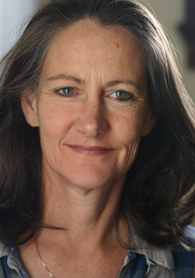 |
This is Sue Stuart’s 27th year of dancing Contact Improvisation. For 7 years Sue taught 2-3 classes a week throughout the year, as well as produced and performed in dance events in Santa Cruz, California and the San Francisco Bay Area. With Miranda Janeschild she taught Mixed-Ability CI classes for 4 years and co-directed two Mixed Ability CI performances. She taught at the West Coast Contact Improvisation Festival for 20 years, and served on its Board of Directors. Sue’s latest offering is Movement Groups for Couples, which employ CI principles and practices to explore and transform relationship dynamics. Her study of the Hakomi Method of Experiential Psychotherapy influences her teaching. |
|
| Pelvis and Presence |
bodywork into movement |
| The pelvis is the seat of our “Center”. It is the prime region for sharing weight. When we are able to open our pelvis both physically and energetically, communication flows clearly from our own Center to our partner’s. The pelvis can also hold memories, both positive and painful, which lead to tension and guarding, and can interfere with this communication. We will play with solo and partner experiences that can gently release this holding, and allow for clear paths of communication. In addition to our focus on the pelvis, we will track where the mind and heart are in relation to our physical “place”. The “act” of being present potentiates each moment. Skill can flourish when we aren’t striving to be one step ahead or reflecting back where we just were. |
|
|
|
|
| MONDAY |
| Günter Klingler |
GER |
|
 |
Dancer, circus artist, choreographer and teacher. After graduating from the movement-theatre-school “Scuola Teatro Dimitri“ he worked in “Circus Monti” (CH) as a Clown. At the “Kuopion Conservatory for Music and Dance” (FIN) he deepened his dance skills and performed afterwards in various companies. Since 1999 he has been touring his solo artist comedy program as “Heinz Herrmann”. Teaching dance, creative juggling and acrobatics at many universities and education programs he has been travelling all over Europe. In 2006, Günter founded his own Company for New Circus, Dance and Theatre, “HeadFeedHands. Practicing and teaching CI for the last 17 years he is especially interested in how CI enters into the performing arts. www.headfeedhands.de www.heinz-herrmann.com |
|
| Butterfly Contact Momentum in CI |
|
| This class will research the use of momentum in order to support or be supported by our partner in a light and easy way. Together we want to investigate the birth of momentum from stillness. Sharpening our understanding of directions in the body and of the body´s reach into space help us to maintain lightness while surfing on another body. Anticipation of landing and take-off, while maintaining an inner connection to the floor, provides the necessary openness to surrender to the situation after or before a flying moment. We will work individually on falling, experiencing and observing each other´s centers as they draw pathways in space. Our aim is to trust our instinctive choices, to follow or support or fall at any moment of the dance |
| Marika Rizzi |
I/F |
|
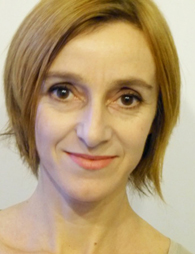 |
Italian is based in Paris since 20yrs. She has been exploring dance and questioning the body as a dancer for contemporary dance companies (F. Ruckert /G, O. Duboc /FR among others) as well as a choreographer for her own work. During the last 14 years her interest related to movement shifted towards a deeper exploration of body and perceptions. In this wide journey she first met Kirstie Simson, Steve Paxton as well as Nancy S. Smith, Lisa Nelson – in her video work - Ray Chung, Simone Forti, Julyen Hamilton, Deborah Hay/ SPCP, Vera Orlock in BMC. She teaches regularly both contemporary and CI in France and abroad and she works with mental invalid young people. She is a Shiatsu practitioner since 2002. |
|
Dancing with the KI
|
bodywork into dancing |
| The Ki, or CHI, is the inner flow of energy that feeds and restores the body, within Chinese Medicine Principles. The quality of the KI is soft and strong, it gives to movement a sensation of “rooted lightness” and supports the dance through a continuous silent presence. The ability of following the inner momentum as a medium for exchanging weight, allows contact to happen in a very organic and spontaneous way. Letting the dialogue with our energy guide the dance and the encounters towards the unexpected as a source of always new inspiration. What if the dance happens without looking for it? What if the entire room and everybody’s dance become my contact duet-partner? What about sharing the dance with the empty spaces, as well? |
|
| |
|
|
| MUSICIANS |
| Jules |
USA |
|
| |
M |
| |
|
|




















